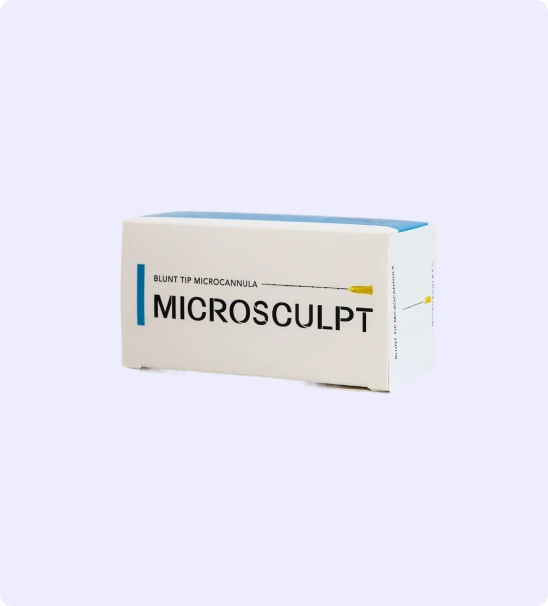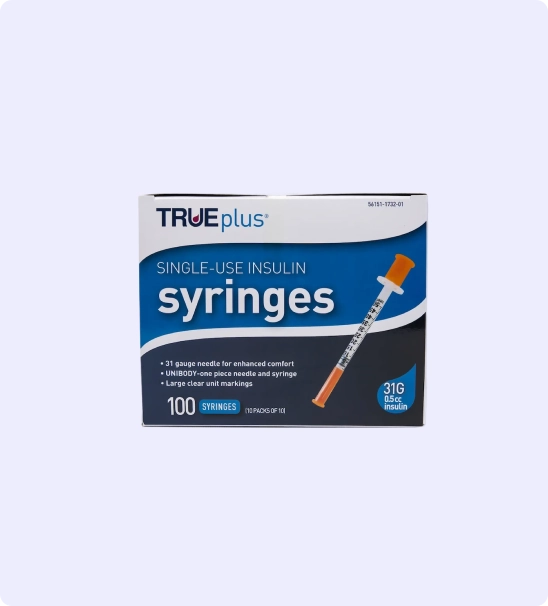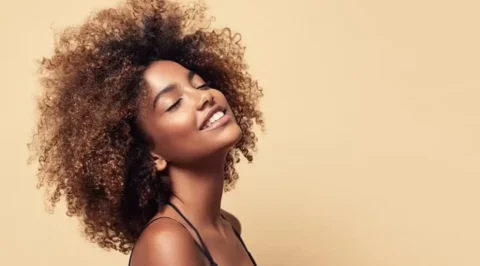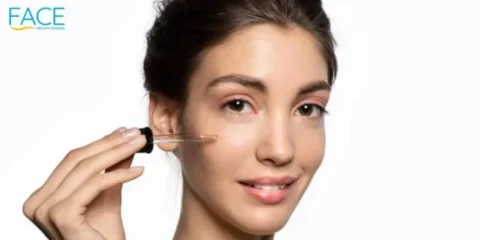Facial fillers are among the most popular in-office cosmetic treatments today. Although the word ‘filler’ is typically used as a catch-all term for injectable products, there is actually a wide-range of different filler types and brands designed to treat specific areas. Depending on the plastic surgeon and the patient’s goals, these fillers are selected and applied using various injection techniques for optimal results.
So how are dermal filler techniques chosen? The practitioner administering the selected filler needs to meet each unique treatment goal in a particular application region. As some products must be injected in a specific way, injections techniques like threading, fanning, cross-hatching, and more may be implemented in order to achieve good results and minimize potential complications.

Injections Your Patients Will Love! Code “20OFF” Takes 20% off Your First Order!
Microcannulas are a tool that every great injector must master. Patients want quick results with no downtime. Our microcannulas are high quality and a fraction of the price of our competitors!
You can create an account here.
Which Type of Injectable Filler Is Best?
Sunken cheeks and nasolabial folds might not be discussed as often as facial wrinkles, but these signs of facial volume deficit definitely affect how people look. The loss of volume in the face and periocular region creates exaggerated skin folds, creases, and wrinkles that significantly make patients look much older. As people all over the US strive to combat aging, the injection of soft-tissue fillers has become one of the most in-demand minimally invasive procedures since 2013, second only to botulinum toxin injections.
A soft tissue filler is an injectable made of natural or synthetic materials. When injected into the skin, a dermal filler can replace the loss of volume caused by disease or age and diminish the appearance of wrinkles, creases, and fine lines. Other off-label applications for a cosmetic filler include:
- Cheek augmentation
- Lip augmentation
- Chin enhancement
- Hand rejuvenation
- Tear trough obliteration
- Midface volumization
- Nose reshaping
- Correction of facial asymmetry
- Correction of depressed scars
Fillers are often classified according to their longevity in tissues or the source of the filler material. A facial filler can be temporary, semi-permanent, or permanent; a temporary filler lasts less than a year, while a permanent filler lasts over two years. Most fillers in the market are semi-permanent, however, as they can last from 1 – 2 years with excellent maintenance and touch ups.
Facial fillers could also be sourced from human, animal, or synthetic materials. Knowing the source of the filler helps the dermatologist understand if the patient needs pre-skin testing. Patients should also be aware what their fillers are made of, as they may have preferences against animal products for religious or personal reasons.
In the US, there are more than 20 dermal fillers with FDA-approval for use, with Juvederm and Restylane being the two most well-known brands. Indications range from lip enhancement to the treatment of moderate and severe volume loss. Modern, soft-tissue filler types include:
1. Hyaluronic acid
Hyaluronic acid (HA) is the most common type of filler in the market, as it’s the most natural feeling and looking substance. A hyaluronic acid dermal filler is a clear substance that feels soft and gel-like, derived from purified bacteria and avian products. Hyaluronic acid is a polysaccharide that naturally occuring in the body, usually found in the skin, synovial fluid, cartilage, and other connective tissues. As such, a hyaluronic acid filler is biodegradable, biocompatible, and non-immunogenic; patients aren’t required to undergo allergy testing because the risk of HA stimulating an allergic reaction is very low.
HA fillers can replace volume loss and stimulate collagen production, improving epidermal thickness for 6 – 12 months before the body breaks down the HA molecules. While there are a number of HA fillers in the market, each hyaluronic acid filler injection differs in viscosity and cross-linking, which makes them suitable for unique injection locations in the skin. Hyaluronic acid is also dissolvable with an injectable enzyme called hyaluronidase, which makes it easy to reverse unwanted results. The top HA filler brands are Juvederm and Restylane.
2. Collagen
Collagen is a naturally-occurring protein in the body, which serves as the building block for the skin, bones, tendons, and other tissues. Derived from purified human or bovine collagen products, collagen fillers have been used as the earliest filler material for the treatment of rhytids. However, collagen fillers have slowly dwindled in popularity, as they have the shortest longevity among all filler materials — lasting only 3 – 4 months before getting absorbed by the body. Cosmoderm, Cosmoplast, Zyderm, and Zyplast are a few examples of collagen-based fillers.
3. Poly-L-lactic acid
Poly-L-lactic acid (PLLA) is a biodegradable and biocompatible synthetic polymer, more commonly seen in medical products like absorbable sutures and bone screws. PLLA fillers are mixed with sterile water to create a hydrogel with a methylcellulose carrier, which are injected in multiple treatment sessions over a few months. Aside from adding volume to the skin and smoothing deep lines, poly-L-lactic acid creates long-lasting collagen stimulating effects as it triggers a foreign-body reaction among fibroblasts, which produce collagen fibers to “fight” off the PLLA.
4. Calcium hydroxylapatite
Calcium hydroxylapatite (CaHA) fillers are made up of a biocompatible and non-immunogenic material which is present in human bones and teeth. As a filler, synthetic bone microspheres (tiny calcium particles) are suspended in a smooth, white carboxymethylcellulose carrier gel and injected with a large needle. With its thick consistency, a CaHA filler can last up to 18 months. Currently, the only FDA-approved CaHA filler is Radiesse.
5. Polymethylmethacrylate
Polymethylmethacrylate (PMMA) is a non-biodegradable, biocompatible synthetic material, usually used in bone cement and intraocular lens implants. The PMMA microspheres are suspended in a bovine-based collagen and lidocaine solution, which will be injected over a period of months. As the body cannot absorb PMMA, this type of filler is considered to be a permanent solution to reduce the appearance of deep lines or wrinkles. Bellafill, formerly known as Artefill, is the only FDA-approved PMMA filler.
Areas To Get A Facial Filler Injection In

Before delving into the various injection techniques utilized for cosmetic filler treatment, it’s important to consider which facial regions and conditions can be targeted with filler injections. Each area of facial anatomy has its unique concerns, precautions, and challenges, which is why it’s critical to get dermal filler injections from a highly-trained specialist. The three main facial regions are the upper face, midface, and lower face.
Upper Face
The upper face consists of the area around the forehead and the eyes. While many patients are concerned about forehead wrinkles, there is a high level of risk associated with this region. The forehead has a vast array of blood vessels. If filler is accidentally injected into a facial artery, it may cause vascular occlusion and cause issues with blood supply. Unnatural looking results may also be produced if dermal fillers are chosen as a treatment for this area, as the tight skin of the forehead is subject to extensive movement.
Like the forehead, filler treatment is also not intended for use in the periorbital region around the eyes. These two regions are best treated with Botox instead. For the upper face, cosmetic fillers can be used to treat a devolumized brow or hollow tear troughs below the eyes, as long as the correct filler is chosen. Performing a tunnel technique with a cannula also ensures safe rejuvenation.
Midface
The midface region consists of the area along the cheeks and around the eyes. The nose and cheekbones are two major problem areas, as patients would have unique preferences and specific beauty goals they wish to achieve with cosmetic injections. Before proceeding with facial contouring, reshaping, or filling-in, patients should have a comprehensive consultation with their providers. A cheek filler is excellent for lifting the nasolabial fold sagging on each side of the face, as well as restoring lost collagen and fat.
Lower face
The mouth, lips, jawline, and chin make up the lower third of the face, and fillers can be used extensively in this area. To keep the jawline and chin proportionate with the rest of the face, a thick, structured filler should be injected deeper into the skin, past the superficial dermis. On the other hand, thin and delicate fillers can be used to correct wrinkles and marionette lines around the mouth.
Although lip augmentation is considered an off-label use for products like Restylane, many providers do inject lip filler into both upper lip and lower lip to volumize thin lips or modify lip shape. However, performing lip injections requires experience, as a heavy hand in injecting can lead to a duckbill appearance.
Common Injection Techniques for Facial Fillers
As a cosmetic procedure, fillers are generally safe as long as they are injected by a certified medical professional with sufficient experience, training, and know-how in the treatment. Otherwise, it’s possible that complications may arise, such as skin necrosis. Although it rarely happens with fillers, necrosis is an adverse event that results from the accidental intravascular injection of filler and causes the death of skin tissue cells due to blood supply failure.
These problems can be avoided with the proper injection techniques. Certain facial regions and treatment cases would require specific techniques, although most facial fillers are administered with a “classic” combination of tunneling, point, stretching, or dual plane methods, which are used in tandem to treat a single area.
- Tunneling: The tunneling or threading technique is the preferred injection technique among cosmetic specialists and plastic surgeons. This method is a safe, versatile, precise, and natural way to address superficial skin wrinkles, deeper lines, and areas with volume loss. The needle or microcannula is inserted into the skin following the direction of the wrinkle. As the needle is withdrawn from the tissue, the filler product is slowly deposited into the area.
- Point: Also called the droplet, serial, or multi-puncture technique, the point method involves injecting several, small filler droplets into a deeper layer of the outer skin or right below the skin. Instead of injecting the filler all at once, the microinjection droplets near each other coalesce to lift wrinkles up. Usually, this technique is used with a silicone injection to improve the quality of the skin or to fill up a large, hollow area in a deep place. The droplet technique is only used for special cases, as it is susceptible to complications and has the potential to look unnatural.
- Stretching: With the stretching injection technique, it’s easier for the injector to place and angle the needle precisely into the target location of the skin. The skin is stretched and put on tension to isolate the target wrinkle. This technique is usually used in areas with skin laxity, like the wrinkles around the mouth.
- Dual plane: With the dual plane technique, the filler is administered in two different levels of the skin in one treatment area. A thin filler is injected into the dermis (the skin’s middle layer), then augmented by injections of a thicker filler in the subdermal plane. The dual plane method is used to help patients with superficial wrinkling but deep volume loss, especially in a target area that is constantly moving.
Less common, special injection techniques are:
- Fern pattern: Small amounts of filler are injected in a leaf-shaped pattern in dynamic facial lines, which helps maintain freedom of movement.
- Cross-hatching: A series of parallel lines are created with a threading technique, which are then crossed with a series of perpendicular lines to treat broader areas.
- Fanning: The needle is placed below the dermis at a certain angle, then passed back and forth under the fold to deposit the product slowly and steadily before the needle is withdrawn.
- Depot: Small deposits of filler are placed serially in the treatment area for maximum support.
- Cone/Tower: The needle is inserted perpendicular to the skin until the bone is reached. The filler is deposited in the shape of a pyramid, and more filler is deposited closer to the bone rather than the skin. This method is usually performed to lift cheek bones.
Needles vs Cannulae: Which Should Be Used?
While traditional, sharp needles remind the standard tool for precise, accurate dermal filler placement, more and more practitioners are utilizing microcannulas to deliver filler products into the treatment site.
Cannulas are long, flexible devices with blunt ends that are attached to the filler syringe. Although they look like needles, they’re far less sharp so there is a lower chance of hitting small blood vessels. With the microcannula method, patients are less likely to experience pain, bruising, and bleeding. Downtime and recovery are also shortened, and the likelihood of vascular occlusion is reduced.
Discover The Best Injection Products at the FACE Med Store
-
 23 gauge 50 mm (2 inch) Microcannulas
23 gauge 50 mm (2 inch) Microcannulas -
 22 Gauge 100 mm (4 inch) Microcannulas.
22 Gauge 100 mm (4 inch) Microcannulas. -
 27 Gauge 38 mm (1.5 inch) Microcannulas
27 Gauge 38 mm (1.5 inch) Microcannulas -
 25 Gauge 38 mm (1.5 inch) Microcannulas
25 Gauge 38 mm (1.5 inch) Microcannulas -
 30 Gauge 25 mm (1 inch) Microcannulas
30 Gauge 25 mm (1 inch) Microcannulas -
 18 Gauge 100 mm (4 inch) Microcannulas
18 Gauge 100 mm (4 inch) Microcannulas -
 25 Gauge 50 mm (2 inch) Microcannulas
25 Gauge 50 mm (2 inch) Microcannulas -
 21 Gauge 50 mm (2 inch) Microcannulas
21 Gauge 50 mm (2 inch) Microcannulas -
 21 Gauge 70 mm (2.75 inch) Microcannulas
21 Gauge 70 mm (2.75 inch) Microcannulas
The FACE Med Store is a proud partner of many cosmetic and wellness practices across the country. We are dedicated to providing high-end medical supplies like microcannulas, syringes, safety goggles, and more at affordable prices. To learn more about our products and services, call the FACE Med Store today.








